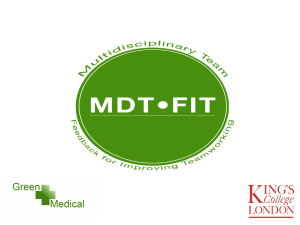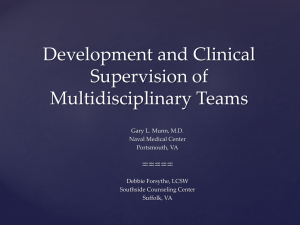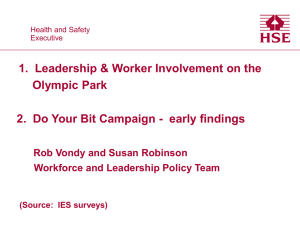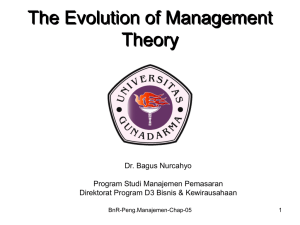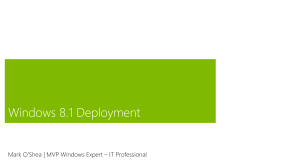The introduction of Key Working within the inpatient setting of St
advertisement
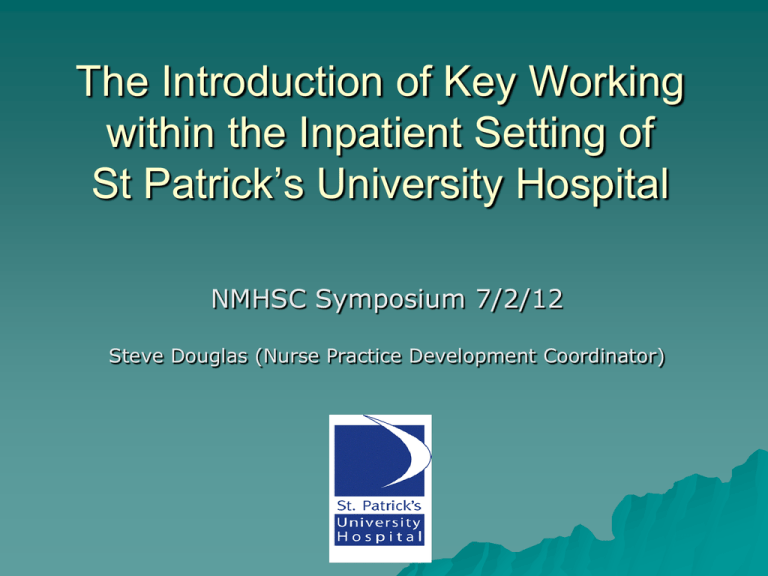
The Introduction of Key Working within the Inpatient Setting of St Patrick’s University Hospital NMHSC Symposium 7/2/12 Steve Douglas (Nurse Practice Development Coordinator) Catalysts for Implementation of Key Working Consistent with ongoing efforts to gain full compliance with Articles 15 & 16 of Approved Centre Regulations/ Quality Framework. Recognised as medium term objective for SPUH. Code of Practice on Admission, Transfer & Discharge to and from Approved Centres. (MHC, 2009). Clinical Governance As part of the review of the C.O.P. on Ad, Tran & Dis - a plan to achieve compliance was drafted by the Clinical Governance Committee in SPUH. In relation to Key working the following actions were agreed: Chair appointed and terms of reference drawn for Key Worker –working group. All disciplines invited to send representation. Met 3 times within a short timeframe and proposals presented to the Clinical Governance Committee for approval. Throughout the process each of the disciplines liaised within their own departments to ensure the basic principles of change management were followed and to make the process more robust. Preparation for Introduction Multiple presentations to all disciplines, including out of hours to accommodate shift patterns of nursing staff. – Changes in practice/policy explained and implications discussed. – Reasons for change explained and attention drawn to the C.O.P. Ad, Tran & Dis (about Key Worker and more broadly about all new obligations, particularly in relation to discharge preparation). – Staff informed of the change management process followed and rationale for our interpretation of the Key Worker System. – Consultation with the Hospital Consumer Council re Service User information on the role of the Key Worker The SPUH Key Worker System Appointment of a Key Worker & Associate Key Worker All Disciplines from within the MDT to participate in Key Working. Consultant as the chair of the MDT will ensure the appointment of a KW & AKW (in consultation with the MDT), for each patient at the first MDT following their admission. The consultant will also identify a team member to be the chair in their absence (in consultation with the MDT). The Associate Key Worker will carry out the responsibilities of the Key Worker in their absence. Communication between the K.W. & the A.K.W. will take place regularly in order to ensure periods of absence are covered and to enable the A.K.W. to be able to act as K.W. at times of unexpected absence. Education of Clinical Staff Re SPUH Key Worker Role Structured around the following elements: Coordinating all stages of the resident’s stay in the approved centre, including discharge planning. Liaison with - resident, family, carer and /or chosen advocate; MDT colleagues and relevant outside agencies (in particular before prior to discharge/transfer). Review written communication made by the primary professionals involved regularly. Prior to Discharge - ensure the MDT Discharge Plan and all relevant documentation has been completed by the appropriate members of the MDT. Key working is not a substitute for professional roles and duties Information & Awareness Building for the Service User As part of a broader effort to improve service user perceptions regarding their care planning, a number of on-going initiatives have been implemented to raise awareness about care planning and related concepts (such as key working): Service user morning lecture introduced on this topic An information leaflet produced and widely circulated An information leaflet specifically designed to aid the key workers explanation of the role in SPUH introduced Nurse delivered recovery information groups content amended to include care planning info Key working is not a substitute for professional roles and duties Where clinical issues arise from Service User contact within the role of the KW these are to be brought to the attention of the MDT or the appropriate professional, within a time frame in keeping with the level of urgency. Key working should not preclude Clinical staff from communicating directly with families, carers, external agencies/professionals. The co-ordination of treatment is overseen by the MDT function and the “person responsible” on the weekly MDT Care Plan Review should be maintained. In instances where key worker issues arise out of hours or when the key worker or associate is not contactable then clinical staff should deal with them if urgent and/or communicate them via the care plan. Reasons for Positive Implementation Already reasonably established structures for MDT meetings and Care Planning. New process whereby Consultant was formally identified as chair of MDT with responsibility for appointing a Key Worker and Associate Key Worker. Key working ensured named accountability at all stages of the service user’s stay in Hospital, rather than relying on shared accountability and does seem to have strengthened the care planning & discharge planning process. A variety of staff initiatives to increase service user awareness about their care plans, multidisciplinary teams and key working Threats to Continued Success Need to ensure complacency doesn’t set in, following 2 successive years of achieving full compliance with MHC inspection standards. Needs to be kept on the Clinical Governance agenda for the foreseeable future and reviewed accordingly. Did present a challenge for Allied Health disciplines, as some perceive their involvement in Key Working to be a significant shift in their role. A lot of work was needed to clarify the role and, in particular the limits of the role. This is ongoing to some extent as the system is bedded in and staff become more comfortable and proficient in the Key Worker role. Quality Improvement Cycle Audit – now a regular clinical audit. Service User feedback through discharge satisfaction questionnaire and Quality Care Service User Lectures. Management by walk around – including feedback to clinical staff. On-going education/feedback for MDTs guided by audit and management by walk around findings. Thanks to the working group. Damien Nolan, Edel Crehan, Sarah Carter, Michelle Phoenix, Emma Dunne, Gavin Rush, Michael Finn, Fionn Kelly, Toni O’Connor, Edel Fortune, Paula Keeshan, John Creedon, Paulina Kowalska-Beda.



